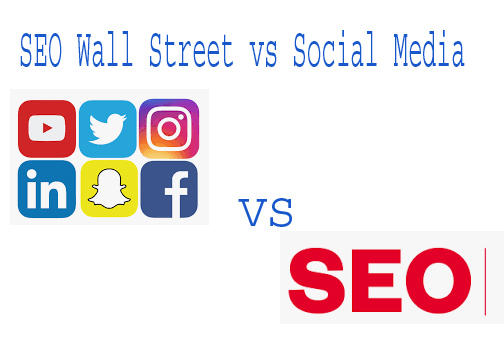In the competitive world of finance and investment, businesses are continually seeking effective strategies to enhance their visibility, attract investors, and drive financial growth. Two major digital marketing strategies that often come into play are
Search Engine Optimization (SEO) and
Social Media Marketing (SMM). Both have their strengths and weaknesses, and choosing the right approach—or combining both—can significantly impact your financial success. This article explores the differences between SEO and social media strategies, particularly in the context of Wall Street and financial markets, and helps determine which approach might be best for driving financial growth.
1. What is SEO Wall Street?
SEO Wall Street refers to the application of search engine optimization strategies tailored specifically for financial markets and investment firms. SEO focuses on improving a website’s visibility in search engine results pages (SERPs) to attract organic traffic. For financial institutions and Wall Street firms, effective SEO involves optimizing content related to financial news, investment advice, stock market analysis, and financial services.
Benefits of SEO Wall Street:
- Increased Visibility: Ranking higher on search engines for relevant financial keywords can drive substantial organic traffic to your website.
- Credibility and Trust: High search engine rankings can enhance your firm’s credibility and authority in the financial sector.
- Cost-Effective Long-Term: While SEO requires an upfront investment of time and resources, it can provide long-term, sustainable traffic without ongoing costs.
- Targeted Traffic: SEO targets users actively searching for financial information, which can lead to higher-quality leads and potential investors.
Drawbacks of SEO Wall Street:
- Time-Consuming: Achieving high rankings can take months of consistent effort and optimization.
- Algorithm Changes: Search engine algorithms frequently change, which can impact your rankings and require ongoing adjustments to your strategy.
2. What is Social Media Marketing (SMM)?
Social Media Marketing (SMM) involves using social media platforms such as Facebook, Twitter, LinkedIn, and Instagram to promote your brand, engage with your audience, and drive traffic to your website. In the financial industry, social media can be used to share market insights, financial news, and investment opportunities.
Benefits of Social Media Marketing:
- Real-Time Engagement: Social media allows for immediate interaction with your audience, facilitating timely responses to market trends and news.
- Brand Awareness: Consistent posting and engagement can enhance brand recognition and build a loyal following.
- Content Virality: Engaging content can be shared and spread quickly, potentially reaching a large audience and driving traffic to your website.
- Targeted Advertising: Social media platforms offer advanced targeting options for paid advertising, allowing you to reach specific demographics and interests relevant to financial markets.
Drawbacks of Social Media Marketing:
- Requires Regular Management: Effective social media marketing demands consistent content creation and community management.
- Shorter Content Lifespan: Social media posts have a shorter lifespan compared to organic search results, often leading to less long-term visibility.
- Paid Advertising Costs: While organic reach is possible, paid social media advertising can become costly, especially in competitive financial markets.
3. Comparing SEO Wall Street and Social Media
| Factor |
SEO Wall Street |
Social Media Marketing |
| Purpose |
Increase organic search visibility |
Engage with audience and promote content |
| Target Audience |
Users searching for financial information |
Social media users interested in financial topics |
| Key Benefits |
Long-term traffic, credibility, targeted leads |
Real-time engagement, brand awareness, content virality |
| Primary Use Case |
Driving organic traffic and improving search rankings |
Building brand presence and engaging with users |
| Cost |
Initial investment with ongoing maintenance |
Can be both free (organic) and paid (advertising) |
| Effectiveness |
Effective for long-term growth and credibility |
Effective for immediate engagement and brand building |
4. Which Strategy Boosts Financial Growth More?
- For Long-Term Growth and Credibility: SEO Wall Street is highly effective. By focusing on optimizing your website for relevant financial keywords, you can build a strong online presence that attracts high-quality, organic traffic. This is particularly important for financial firms looking to establish themselves as authorities in their field and attract investors over the long term.
- For Immediate Engagement and Brand Awareness: Social Media Marketing excels. Social media allows for rapid interaction with your audience, effective dissemination of financial insights, and creation of buzz around your brand. It is especially useful for engaging with potential clients, promoting financial products, and staying on top of market trends.
5. Combining Both Strategies
For the most comprehensive approach, consider integrating both
SEO and
social media marketing strategies:
- Enhance Your SEO Efforts with Social Media: Share your optimized content on social media to drive additional traffic to your site and improve your content’s reach.
- Leverage Social Media Insights for SEO: Use social media engagement data to understand your audience’s interests and preferences, which can inform your SEO strategy and content creation.
